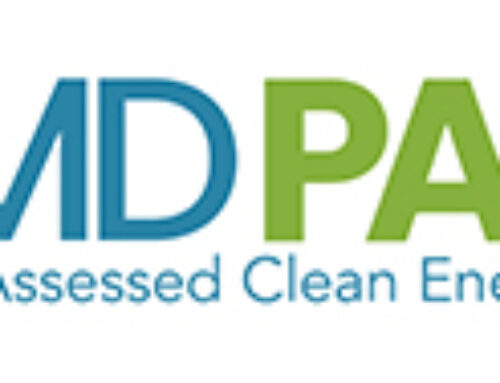
Through state incentive programs, battery storage can be a profitable investment for commercial real estate with large energy requirements.
Maryland boasts one of the highest square footage of LEED certified buildings per capita and is frequently a pioneer of standards and programs that seek to minimize the environmental impact of our built environment, a demonstration of a commitment to sustainability and environmentally conscious design principles throughout the state. The MD-PACE program is one reflection of this commitment. Another reflection of this commitment is the battery storage incentive program that Maryland created in 2017, the first of its kind in the country. This program improves the affordability of residential and commercial energy storage through an income tax credit; combined with other national and state incentive programs, battery storage is not only affordable, but can be highly profitable.
The tax incentive program, named the Maryland Energy Storage Income Tax Credit Program, has been swiftly embraced by the business owners and homeowners of Maryland. Each of the last three years, $750,000 have been allocated to applicants through this program. For fiscal year 2020, $300,000 of available funds are earmarked for residential users and $450,000 for commercial property owners. Tax credits are distributed to applicants on a first come, first served basis. Maryland’s incentive can be substantial; for successful commercial applicants, the tax credit can defer up to $75,000 or 30% of the cost of installation, whichever is less. The 2020 tax credit can be used for fiscal year 2020, and the final day to submit a full application is January 15, 2021. For a full list of program requirements, visit the Maryland Energy Administration’s website.
Commercial property owners can save on their utility bills in two ways using battery storage technology. First, there is a method called “peak shaving,” whereupon the absolute peak demand of a property is reduced by a certain number of kW; this decreases the total billed energy consumption of the building at any given time. For example, if a property required 100 kW of energy from the grid with all appliances and energy requirements running at full force, with an energy storage device defraying 10 kW of that demand, the property owner would be billed for 90 kW at peak instead of 100 kW. The other method uses variable pricing to the property owner’s benefit. In a given day, peak demand for energy is billed higher than the demand for energy at non-peak hours, as such demand creates greater stress on the electric grid. This variable premium pricing is known as a “time-of-use tariff” and can be very costly for properties. By drawing down energy from the grid at non-premium hours and storing it, the property can replace energy needed during times of high pricing with the cheaper alternative; this can also be achieved with solar panels or another renewable energy source that produces energy independent of the grid for use during high-peak times. This form of battery storage is most effective when it is paired with an automated control that switches into energy-store or energy-use mode when it senses changes in demand.
Battery storage reduces overall energy usage, promotes grid-independency, increases property value, and can reliably reduce utility costs while maintaining dependability (Energy Storage Association). Commercial buildings can increase profitability while promoting sustainability and reducing energy-consumption, which lowers fossil fuel use and emissions. The most significant barrier to scaling battery storage is the high upfront cost associated with purchasing and installing the technology. As mentioned before, many incentive programs exist in Maryland that substantially reduce the cost of battery storage, but these are often insufficient to persuade commercial property owners by their own. One strategy that can be implemented to remedy this is to use C-PACE to finance the upfront costs of the purchase and installation of energy storage devices. The utility savings of the battery storage technology will likely exceed the upfront costs and, combined with incentive programs like the Maryland Energy Storage Income Tax Program, can provide an asset for an affordable cost.
Are you interested in using C-PACE financing to install storage capacity on your commercial property? Reach out to Marcus Glomset today to start the process!
Marcus Glomset
mglomset@paceservicing.com
508 736 8876


